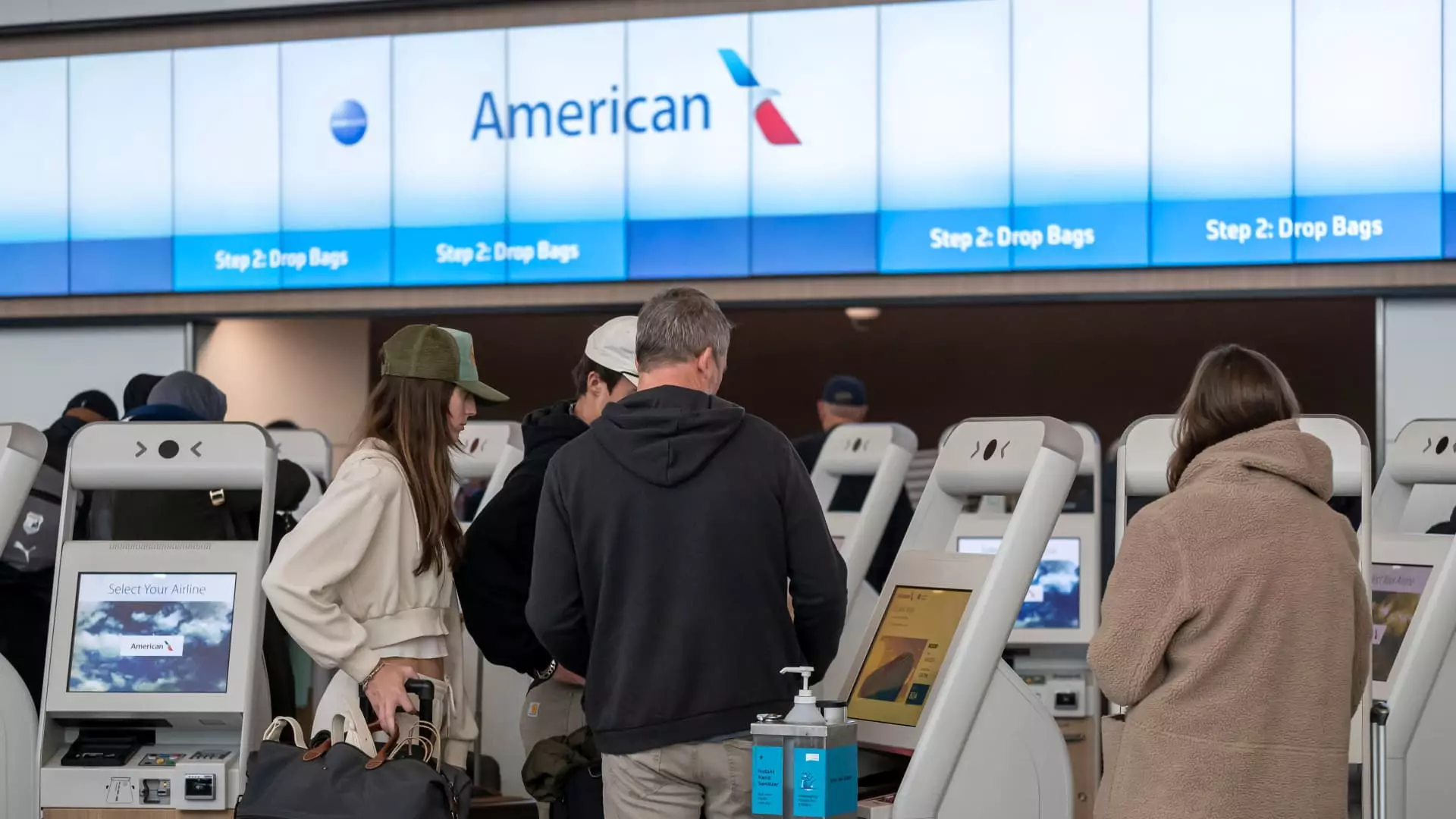In the fast-moving world of finance, midday trading often reveals much about the economic climate and investor sentiment. This article delves into key developments in stock performance across various sectors, highlighting companies that are either soaring or plummeting in the wake of significant news and earnings reports.
The aviation industry faced a severe setback when an American Airlines regional jet was involved in a collision with an Army helicopter in Washington, D.C. This tragic event has marked the first fatal commercial airline crash in the U.S. since 2009, sending shockwaves through the market. Following the incident, shares of American Airlines dropped by 2.5%, reflecting the market’s immediate reaction to potential operational disruptions and heightened scrutiny they may face moving forward. Investors are likely weighing the implications of increased safety regulations and the effect on public perception.
Nvidia: Continued Pressure Amidst Market Uncertainty
Nvidia, the renowned chipmaker, has seen its stock fall more than 16% over the past week. A decline of over 3% in midday trading today continues this downward trend, impacted by persistent selling pressure and broader market dynamics. Investors are expressing concern over the company’s ability to maintain its growth trajectory amidst rising competition and economic pressures that may affect discretionary technology spending. The downward momentum is indicative of a sector grappling with fluctuations in demand for next-generation semiconductor technology.
UPS: A Catastrophic Day for a Logistics Giant
In a startling development, shares of United Parcel Service (UPS) plunged by an astounding 16%, shaping up to be one of the worst trading days in its history. The cause? UPS announced a significant reduction in shipping volume with its largest customer, Amazon, aiming for a decrease of more than 50% by the second half of 2026. This announcement sparked fears about the sustainability of UPS’s revenue model, raising questions about the competitive landscape as more companies reposition their logistics strategies.
On a contrasting note, Las Vegas Sands has emerged as a bright spot in a turbulent market, reporting fourth-quarter revenues that surpassed expectations, amounting to $2.9 billion—slightly ahead of analyst forecasts set at $2.87 billion. This positive earnings surprise boosted investor confidence, allowing the company’s shares to rally by more than 10%. The recovery in the gaming and entertainment sectors post-pandemic is evident as Las Vegas Sands capitalizes on pent-up consumer demand for leisure activities.
Contrary to its early successes, ServiceNow faced challenges today, with shares sliding by more than 12% following a disappointing first-quarter revenue guidance. The company’s anticipated revenue of $2.995 billion to $3 billion fell short of consensus estimates, indicating that market conditions may not be as favorable for software providers as previously expected. This shift emphasizes the overarching volatility in tech stocks, as investors are keen to reassess their positions.
IBM: An Unexpected Turnaround
In an environment marked by uncertainty, IBM achieved a surprising feat, gaining 12% in response to better-than-expected fourth-quarter results. The tech stalwart reported earnings per share of $3.92, exceeding expectations and bolstering investor confidence. Its revenue of $17.55 billion lined up with analysts’ predictions. This turnaround reflects IBM’s ongoing efforts to innovate and maintain relevancy in a competitive tech landscape, showcasing its resilience.
Caterpillar and Teradyne unveiled decidedly mixed earnings results, resulting in notable stock fluctuations. Caterpillar saw a 4.8% decline despite meeting earnings projections, as revenue missed expectations. Conversely, Teradyne faced a dip of 6.5% despite earnings guidance revealing potential for revenue growth. This divergence in performance across industrial and technology sectors underscores the varying economic pressures faced by companies, driven by unique operational challenges.
Telecommunication giant Comcast reported significant losses in residential broadband subscribers, leading to a 12% decline in shares. The communication sector is increasingly competitive, and the decrease in subscribers has left investors worried about the company’s long-term growth potential. Similarly, Cigna’s stock dropped by 8% after its fourth-quarter results missed analysts’ expectations, despite reporting revenue above forecasts. This illustrates a growing concern regarding operational efficiencies in the healthcare sector.
As midday trading unfolds, the interplay of various companies’ fortunes paints a complex picture of the economic landscape. From tragic events impacting aviation to the dynamic shifts in tech and healthcare, the narrative is ever-evolving. Investors must remain vigilant and adaptable to navigate these turbulent waters wisely—whether watching stocks soar or plummet, understanding the nuances of each sector can be crucial in making informed decisions. The market’s pulse is clearly sensitive to both internal and external factors, demanding a keen eye on emerging trends.

